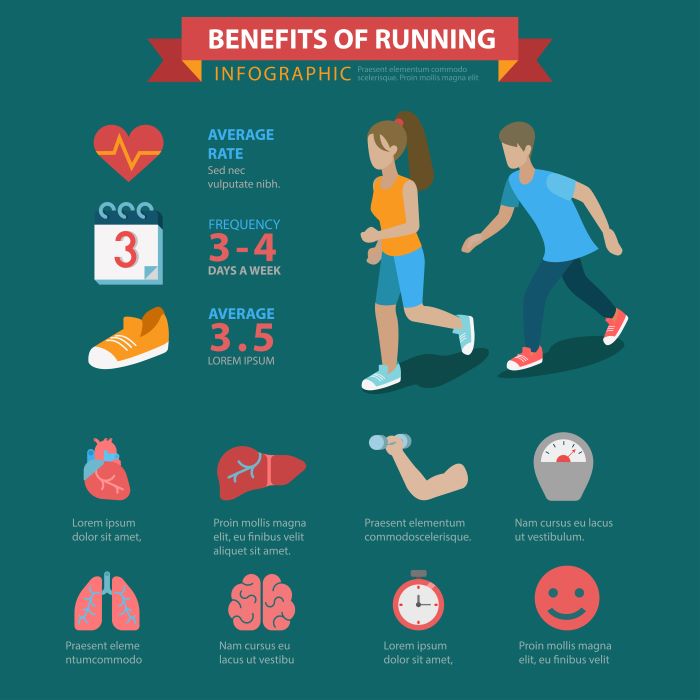To truly enhance your fitness journey, it’s vital to understand VO2 max, a key indicator of your cardiovascular fitness. VO2 max represents the maximum volume of oxygen your body can utilize during intense exercise. This measurement is crucial for runners as it directly correlates with endurance and performance. The higher your VO2 max, the better your body can perform during physical activity, enabling you to run longer distances at a higher intensity.
For athletes and fitness enthusiasts alike, improving VO2 max should be a primary goal. Here are several reasons why:
- Increased Endurance: A higher VO2 max means you can sustain aerobic activity for longer periods, allowing you to tackle challenging workouts and races with confidence.
- Enhanced Speed: With improved oxygen delivery to your muscles, you can increase your pace, making those challenging intervals more manageable.
- Better Recovery: Athletes with a high VO2 max often experience quicker recovery times, meaning you can train harder and more frequently without excessive fatigue.
Understanding your VO2 max can also help in personalizing your training regimen, allowing you to focus on workouts that specifically target improvements in this area. By doing so, you can unlock your potential and achieve your fitness goals faster. Visit our website to learn more and get started today! Click here.
Best Running Workouts to Improve VO2 Max

When it comes to running workouts to improve VO2 max, specific training methods can lead to faster gains in your aerobic capacity. Here are some of the best workouts that have been proven effective:
- Interval Training: This involves alternating between high-intensity bursts and lower-intensity recovery periods. For example, sprint for 30 seconds followed by 1-2 minutes of jogging or walking. Repeat this cycle for 20-30 minutes. This method pushes your cardiovascular system, enhancing your VO2 max significantly.
- Tempo Runs: These runs are performed at a ‘comfortably hard’ pace, typically around 80-90% of your maximum heart rate. Start with a warm-up, then maintain this challenging pace for 20-40 minutes, followed by a cooldown. Tempo runs help your body adapt to sustained effort, improving both speed and endurance.
- Fartlek Training: Originating from Sweden, this ‘speed play’ workout mixes different speeds and intensities throughout your run. For example, sprint to a landmark, then slow down to recover, and repeat. This playful approach not only boosts VO2 max but also keeps your workouts engaging.
Incorporating these workouts into your weekly training routine can lead to significant improvements in your VO2 max. Remember to include adequate recovery days to allow your body to adapt and grow stronger.
Incorporating Interval Training for Maximum Benefit

To truly harness the power of interval training for improving your VO2 max, a structured approach is essential. This type of workout is not just about sprinting; it combines periods of intense effort with recovery, allowing your body to adapt and improve rapidly.
Here are a few strategies to effectively incorporate interval training into your routine:
- Choose the Right Distance: For beginners, start with shorter intervals, such as 200 to 400 meters. As your fitness improves, you can increase the distance to 800 meters or even 1 kilometer. This will help maintain a high intensity without overexerting yourself.
- Vary the Work-to-Rest Ratio: A typical ratio for interval training is 1:1, meaning if you sprint for 30 seconds, you rest for 30 seconds. However, as your fitness level increases, experiment with ratios like 2:1 or 3:1 to further challenge your body.
- Incorporate Hill Sprints: Running uphill increases the intensity of your workout and recruits more muscle fibers. Find a hill and sprint up for 20-30 seconds, then walk or jog back down to recover. This method not only boosts your VO2 max but also enhances leg strength.
- Track Your Progress: Keep a log of your workouts, noting the distances, times, and how you felt during each session. This will help you see improvements over time and adjust your training as needed.
By consistently integrating these strategies into your interval training, you can maximize the benefits and see quicker advancements in your VO2 max levels.
The Role of Endurance Runs in VO2 Max Boosting
While high-intensity workouts like interval training are crucial for improving your VO2 max, endurance runs play a significant role in building the aerobic base necessary for sustained performance. These longer runs help to enhance your cardiovascular efficiency and overall stamina, which are fundamental for boosting your VO2 max.
When planning your endurance runs, consider the following elements:
- Duration: Aim for runs that last anywhere from 60 to 90 minutes, depending on your fitness level. This duration allows your body to tap into fat stores for energy while improving your heart’s efficiency.
- Maintain a Conversational Pace: Your pace during these runs should be comfortable enough that you can hold a conversation. This generally correlates with a heart rate that is around 65-75% of your maximum, which is ideal for building endurance without overtraining.
- Weekly Structure: Incorporate at least one endurance run into your weekly training schedule. Pair it with other workouts, such as interval training and strength sessions, to create a well-rounded fitness regime.
- Fueling and Hydration: Longer runs require proper fueling strategies. Consume carbohydrates before and during your run to maintain energy levels and stay hydrated to prevent fatigue.
By integrating endurance runs into your training, you establish a solid foundation that complements the high-intensity workouts aimed at improving your VO2 max. This balance will ensure that you not only enhance your speed and power but also sustain those gains over longer distances.
How to Structure Your Weekly Running Schedule

Creating a well-structured weekly running schedule is essential for enhancing your VO2 max and overall fitness. A balanced approach that incorporates various types of runs will maximize your training benefits while reducing the risk of injury. Here’s how to effectively structure your week:
- Monday – Easy Run: Start your week with an easy-paced run of about 30-45 minutes. This serves as a recovery from the weekend and allows your body to adapt to the upcoming workouts.
- Tuesday – Interval Training: Focus on high-intensity intervals. For example, run 400 meters at a fast pace, followed by 2-3 minutes of recovery jogging or walking. Repeat this 4-6 times, adjusting the intensity and recovery based on your fitness level.
- Wednesday – Cross-Training: Incorporate activities like cycling, swimming, or strength training. This provides a break from running while still promoting cardiovascular fitness and muscle strength.
- Thursday – Tempo Run: Aim for a 20-minute tempo run where you maintain a challenging but sustainable pace. This run helps improve your lactate threshold, crucial for increasing your VO2 max.
- Friday – Rest Day: Take a complete rest day to allow your body to recover. Rest is crucial for muscle repair and growth.
- Saturday – Long Endurance Run: Dedicate this day to a longer run lasting 60-90 minutes. Focus on maintaining a steady pace, which will improve your endurance and aerobic capacity.
- Sunday – Recovery Run or Rest: Depending on how you feel, opt for a gentle recovery run or take another rest day. Listen to your body to avoid overtraining.
By structuring your weekly running schedule in this way, you create a comprehensive training plan that focuses on improving your VO2 max while allowing for adequate recovery and adaptation. Adjust the duration and intensity of each workout based on your fitness level and goals to ensure continuous progress.
Tips for Monitoring and Tracking Your Progress

Monitoring and tracking your progress is crucial for understanding how your running workouts to improve VO2 max are impacting your fitness journey. By keeping an eye on your performance, you can make informed adjustments to your training plan. Here are some effective tips to help you track your progress:
- Use a Running App: Leverage technology by utilizing running apps like Strava or Runkeeper. These apps can track your distance, pace, and even elevation, providing valuable insights into your workouts.
- Keep a Training Journal: Document your runs in a physical journal or digital document. Note the distance, duration, and how you felt during each session. This will help identify patterns and areas for improvement.
- Monitor Heart Rate: Invest in a heart rate monitor to gauge your intensity levels during workouts. Tracking your heart rate can help you identify your training zones and ensure you’re pushing yourself appropriately.
- Set Milestones: Establish short-term and long-term goals, such as achieving a specific pace or distance. Regularly reviewing these milestones can keep you motivated and focused on your objectives.
- Conduct Periodic Fitness Tests: Every few weeks, perform a fitness test, such as a timed mile or a 5K run. Compare your results over time to measure improvements in your VO2 max and overall endurance.
By implementing these tracking strategies, you’ll gain a clearer picture of your progress and be better equipped to adapt your training as needed. Visit our website to learn more and get started today! Click here.


